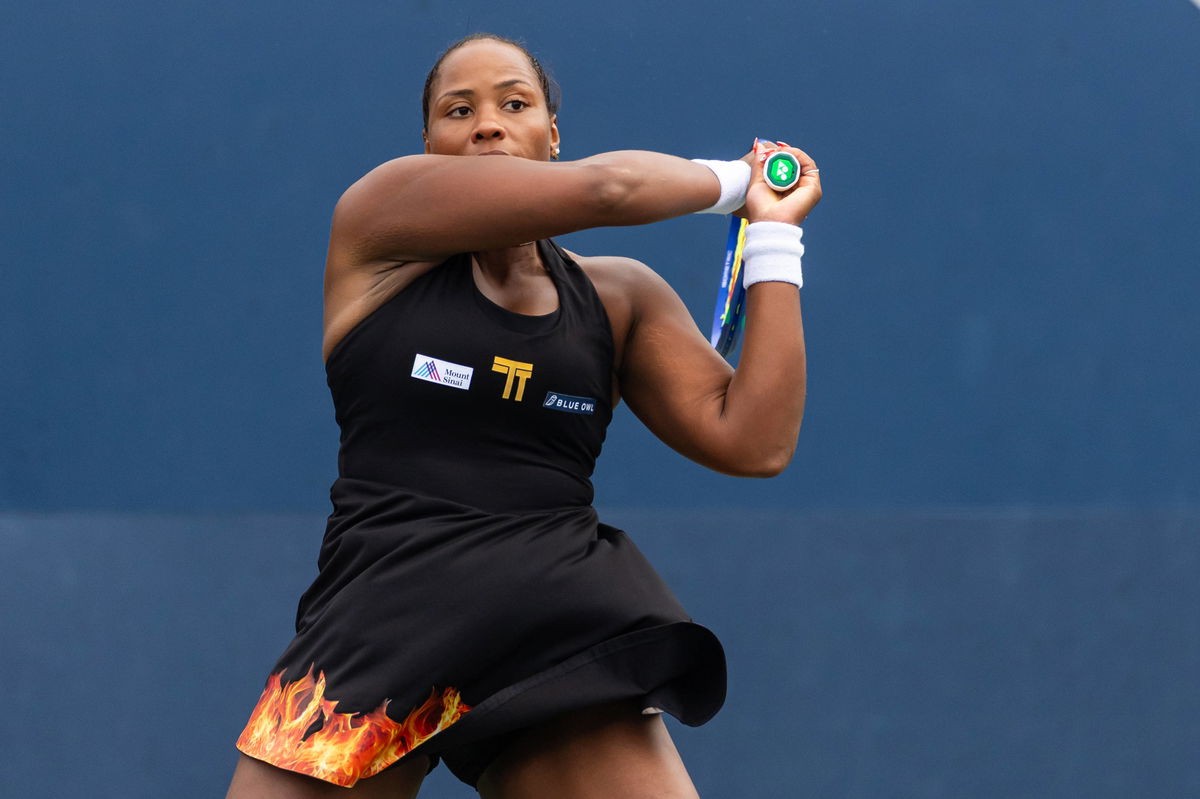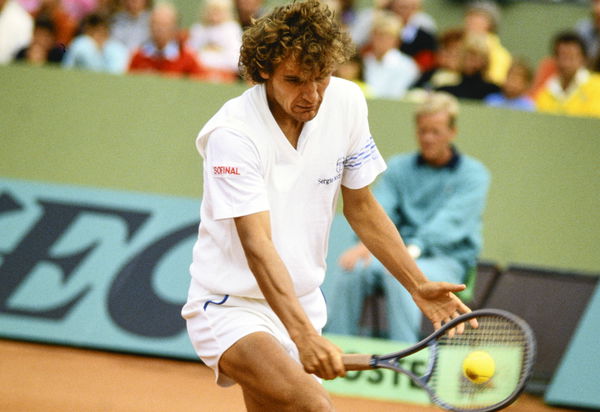
Imago
Tennis: US Open Aug 27, 2025 Flushing, NY, USA Taylor Townsend of the United States in action against Jelena Ostapenko in the second round of the womens singles at the US Open at Billie Jean King National Tennis Center. Flushing Billie Jean King National Tennis Center NY USA, EDITORIAL USE ONLY PUBLICATIONxINxGERxSUIxAUTxONLY Copyright: xMikexFreyx 20250827_bd_zg6_022

Imago
Tennis: US Open Aug 27, 2025 Flushing, NY, USA Taylor Townsend of the United States in action against Jelena Ostapenko in the second round of the womens singles at the US Open at Billie Jean King National Tennis Center. Flushing Billie Jean King National Tennis Center NY USA, EDITORIAL USE ONLY PUBLICATIONxINxGERxSUIxAUTxONLY Copyright: xMikexFreyx 20250827_bd_zg6_022
In the second round match at the US Open, Taylor Townsend powered past No. 25 seed Jelena Ostapenko with a fierce 7-5, 6-1 win, but the real drama erupted after the final point. At the net, instead of a routine handshake, Ostapenko lashed out, accusing Townsend of breaking tennis etiquette by not apologizing for a net-cord winner. Three times, the fiery Latvian appeared to tell the American that she has “no education.” The trigger? A single ball that brushed the tape, igniting a storm. Why did Ostapenko rip into Townsend so brutally over something so small? Tennis may have asked the question, but we’re here to deliver the answer.
Watch What’s Trending Now!
Ostapenko stormed out of the gates in their US Open clash, redlining with her trademark go-for-broke fury. For nearly half an hour, Taylor Townsend, world No. 1 in doubles and one of the rising fan favorites in American tennis, looked helpless against the Latvian’s relentless barrage. But then, as so often happens with Ostapenko, the rocket fire cooled. Her timing dipped, her accuracy wavered, and Townsend found a way in.
The turning point came late in the first set. Ostapenko moved forward, preparing to close at the net. Townsend ripped a groundstroke that clipped the tape and popped high into the air, forcing Ostapenko into a desperate stretch to barely shovel the ball back. Taylor Townsend, stunned the shot even went over, had the easiest of putaways. Fueled by momentum and a touch of fortune, she rode that surge all the way to the finish line, sealing a 7-5, 6-1 victory.
ADVERTISEMENT
But the story didn’t end with the scoreboard. At the net, where players are supposed to bury the hatchet, Ostapenko seethed. For her, the lack of a raised hand, that brief, almost symbolic apology for a net-cord winner, lingered like a wound. What seemed a moment of luck had detonated into an on-court feud that carried over into the post-match fury.
"Sorry for the first set!" 🫣@janniksin can only apologise for the net cord in the opening set 🤣#RolexShanghaiMasters pic.twitter.com/tuaQ4g34J0
— Tennis TV (@TennisTV) October 7, 2023
Now, the question is: was it really that big of a deal? Tennis says yes, and no. Net-cords are tricky little devils: tiny deflections that can turn winners into errors, errors into winners. A ball can dribble over for a cheap point, kick up into a sitter, or just barely alter its path. And across this spectrum of outcomes, tradition has dictated one thing: if you gain the point off the net, you raise your hand. A gesture. An acknowledgment of luck. A small nod to fairness.
ADVERTISEMENT
And if you don’t? Hurt feelings. Righteous indignation. Maybe even an outburst or two. Ostapenko isn’t the first, nor will she be the last, to let the lack of a hand-raise boil her blood. Tennis history is littered with net-cord flare-ups that turned ordinary matches into defining rivalries.
Take Miami 2018. A Russian ranked 52nd faced a Greek ranked 70th, and nobody cared. Daniil Medvedev vs. Stefanos Tsitsipas was, on paper, a first-round filler. Medvedev won 2-6, 6-4, 6-2. But when Tsitsipas failed to apologize for a net cord, sparks flew.
ADVERTISEMENT
At the handshake, Medvedev let rip: “Man, you better shut your f** up, okay? Hey Stefanos, you want to look at me and talk?” He piled on: “You go emergency toilet for five minutes during [the third set} and then you hit let, and you don’t say sorry. You think you are a good kid?” That was no small spat, it was the birth of a rivalry that would follow them for years.
Or look at Auckland, 2023. Jenson Brooksby, then the young American disruptor, clashed with Fabio Fognini at the ASB Classic. Fognini wanted an apology for a net cord; Brooksby waved it off. “It’s gonna happen in the heat of the battle. He (Fognini) said I should apologize for net cords, but I was taught that it’s not really luck-based,” Brooksby shrugged. The Italian didn’t let it slide; he mocked him later on Instagram: “So funny, love new generation.”

Reuters
Tennis – ATP Masters 1000 – Monte Carlo Masters – Monte-Carlo Country Club, Roquebrune-Cap-Martin, France – April 12, 2022 Italy’s Fabio Fognini reacts during his second round match against Greece’s Stefanos Tsitsipas REUTERS/Denis Balibouse
But not every net-cord comes with finger-pointing. Some become part of legend. Wimbledon 1980: Borg vs. McEnroe. Fourth-set tiebreaker. McEnroe saves match point with a ball that smudges the net tape and trickles over. No apology, no outrage. Both players put their heads down and marched back to the baseline.
ADVERTISEMENT
Nine years later in Paris, Michael Chang, already immortal for his underhand serve against Ivan Lendl, struck again. His passing shot clipped the net and tumbled over. No, sorry, just raw defiance, fists pumping, eyes blazing. In those moments, apology wasn’t etiquette; it was irrelevant.
Even in modern times, not every player skips the gesture. At the Rolex Shanghai Masters, Jannik Sinner brushed off Marcos Giron in straight sets. At the handshake, Sinner muttered, “Sorry for the first set!”, a nod to a net cord that still sat with him. Some players still carry the tradition, even if it isn’t written in stone.
ADVERTISEMENT
And here’s the twist: the rule isn’t even a rule. The USTA doesn’t list net-cord apologies in its code of conduct. No official handbook demands it. It’s entirely unwritten, floating somewhere between sportsmanship and superstition.
Mats Wilander, a seven-time Slam champion, admits players “did it back in his day,” but YouTube is full of footage where no such gestures exist. In other words, it’s as much folklore as it is etiquette.

Imago
850608 Tennis, French Open, Roland Garros, Paris, Mens Singles 1985: Mats Wilander of Sweden. *** 850608 Tennis, French Open, Roland Garros, Paris, Mens Singles 1985 Mats Wilander of Sweden PUBLICATIONxNOTxINxSWExNORxFINxDEN Copyright: BILDBYRAN BB850608BB038
So why, then, did Ostapenko react to Taylor Townsend the way she did? Maybe because unwritten rules cut deeper than official ones. Maybe because in the heat of defeat, every little slight feels like disrespect.
ADVERTISEMENT
Or maybe because Ostapenko has always played with fire in her veins, and Townsend’s silence was gasoline. Whatever the reason, the moment overshadowed the match, igniting a broader conversation on whether net-cord apologies are meaningful respect or meaningless habit.
And Taylor Townsend? She walked away with the win and the storm. But she didn’t walk away alone. Across the tennis world, players and fans rallied around her, pointing out that she owed no apology for sheer luck and certainly not for being on the receiving end of insults. What should have been a footnote became a headline.
ADVERTISEMENT
And in the end, the net cord, just a sliver of tape on the court, once again became the thread that stitched controversy deep into the tournament.
ADVERTISEMENT
ADVERTISEMENT
ADVERTISEMENT

